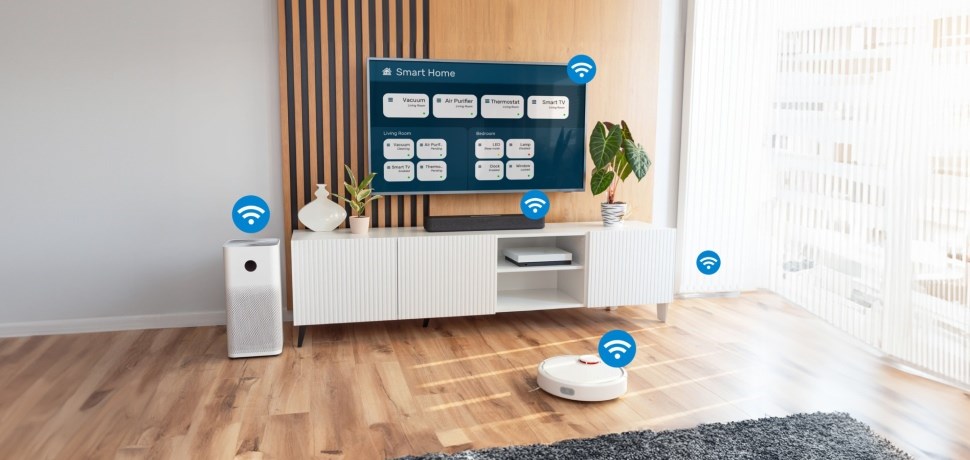Smart TV Privacy Risks: Navigating IoT Security Concerns
Recent alerts from cybersecurity experts and authorities like the FBI suggest that the risk of smart TVs spying on users is real and significant.

Balancing IoT's Innovations with Privacy and Security Risks
The Internet of Things (IoT) has seamlessly integrated into our lives, promising unmatched convenience, efficiency, and innovation. From transforming homes into smart ecosystems to revolutionizing mobility with connected vehicles, IoT devices have become ubiquitous. Yet, this technological advancement comes with its own set of challenges, particularly concerning privacy and cybersecurity.
Let us use our Smart TVs as the perfect example of this in action. For several smart TV manufacturers, security is an afterthought, which makes them vulnerable to various kinds of threats. Hackers can not only control your unsecured TV for changing channels or volume controls, but also stalk your everyday movements and conversations using the integrated camera and microphone. Why? Because it is far easier to hack into a Smart TV than a far more protected smartphone. And because your TV is connected to your Wi-Fi, hackers can soon gain access to your entire system.
The Hidden Risks Behind the Technology Powering Smart TVs
Smart TVs epitomize the double-edged sword of IoT technology. Several manufacturers prioritize innovation over security, leaving devices susceptible to various cyber threats. Unsecured smart TVs offer hackers a window, not only to tamper with your viewing experience but also to intrude into your private life through built-in cameras and microphones. The relative ease of hacking a smart TV compared to more secure devices like smartphones, coupled with their connection to your home Wi-Fi, paves the way for hackers to potentially access your entire home network.
According to a 2023 study by the Pew Research Center, approximately 47% of smart device users are concerned about their privacy and security, yet many fail to take necessary protective actions. This discrepancy underlines the urgent need for increased public awareness and education on digital security.
The Promise and Pitfalls of IoT
The allure of IoT lies in its promise to revolutionise how we interact with technology, making our lives more convenient and efficient. Smart thermostats adjust temperatures based on our preferences, wearable fitness trackers monitor our health in real-time, and voice-activated assistants respond to our commands seamlessly. However, this convenience often comes at a cost – the compromise of our privacy and security.
One of the primary concerns surrounding IoT devices is their potential for intrusive surveillance. Many IoT devices collect vast amounts of data about users’ behaviours, preferences, and habits, often without their explicit consent. Smart speakers listen to our conversations, smart cameras capture our movements, and smart TVs track our viewing habits. This data, if not properly secured, can be exploited by malicious actors for nefarious purposes, such as identity theft, unauthorised surveillance, or targeted advertising.
The Impact IoT on Digital Banking
Digital banking reaps the benefits of IoT through enhanced customer experiences and operational efficiency. Features like voice-enabled banking, biometric authentication, and personalised banking services highlight IoT's advantages. However, these innovations also introduce cybersecurity challenges that demand vigilant awareness of the potential risks involved.
The advantages of IoT in digital banking include:
The disadvantages and cybersecurity risks:
How to keep your devices, bank accounts and cash secure
Conclusion: Navigating IoT with Caution
While IoT offers undeniable benefits, it also poses significant risks to privacy and cybersecurity. By understanding these risks and adopting proactive security measures, individuals can navigate the IoT landscape with greater awareness and confidence, safeguarding their privacy and security in an increasingly connected world. Remember: convenience should never come at the expense of privacy and security.